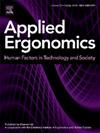Optimizing multimodal alarms to mitigate inattentional blindness in air traffic control
IF 3.4
2区 工程技术
Q2 ENGINEERING, INDUSTRIAL
引用次数: 0
Abstract
This study evaluates the effectiveness of multimodal alarms in reducing inattentional blindness (i.e., the inability to detect unexpected visual stimuli), a critical safety concern in air traffic control (ATC). Two experiments were conducted: the first assessed the attention-capturing ability of multimodal alarms with visual, vibrotactile, and auditory alerting components in a simulated ATC task with 29 student controllers, using electroencephalography (EEG), questionnaires, and performance metrics. The second assessed the effectiveness of visual ambient alarms with reduced opacity and duration with 28 students. Results indicated that multimodal alarms significantly reduced missed alarms compared to the standard ATC alarm, but were perceived as more urgent and annoying. Notably, even low-opacity (5%) and brief (17 ms) visual ambient alarms were effective. These findings provide insights for optimizing alarm designs in safety-critical environments such as aviation, healthcare, and nuclear power.

优化多模式警报,减少空中交通管制中的注意力盲区
本研究评估了多模式警报在减少无意失明(即无法检测到意外的视觉刺激)方面的有效性,这是空中交通管制(ATC)中一个关键的安全问题。研究人员进行了两项实验:第一项实验利用脑电图(EEG)、问卷调查和性能指标,评估了在29名学生控制的模拟ATC任务中,视觉、振动触觉和听觉警报组成的多模式警报的注意力捕获能力。第二组评估了减少不透明度和持续时间的视觉环境警报的有效性,共有28名学生。结果表明,与标准ATC警报相比,多模式警报显着减少了错过的警报,但被认为更紧急和令人讨厌。值得注意的是,即使是低透明度(5%)和简短(17毫秒)的视觉环境警报也是有效的。这些发现为优化航空、医疗保健和核电等安全关键环境中的报警设计提供了见解。
本文章由计算机程序翻译,如有差异,请以英文原文为准。
求助全文
约1分钟内获得全文
求助全文
来源期刊

Applied Ergonomics
工程技术-工程:工业
CiteScore
7.50
自引率
9.40%
发文量
248
审稿时长
53 days
期刊介绍:
Applied Ergonomics is aimed at ergonomists and all those interested in applying ergonomics/human factors in the design, planning and management of technical and social systems at work or leisure. Readership is truly international with subscribers in over 50 countries. Professionals for whom Applied Ergonomics is of interest include: ergonomists, designers, industrial engineers, health and safety specialists, systems engineers, design engineers, organizational psychologists, occupational health specialists and human-computer interaction specialists.
 求助内容:
求助内容: 应助结果提醒方式:
应助结果提醒方式:


